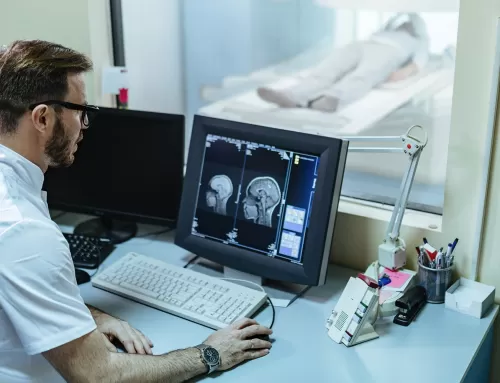TABLE OF CONTENT
In the realm of mental health, Generalised Anxiety Disorder (GAD) is a subject that merits our utmost attention. It is essential to provide a comprehensive understanding of this condition to help those affected and to spread awareness. In this article, we, as experts in the field, delve deep into the intricacies of GAD, its symptoms, causes, diagnosis, and treatment options. Our aim is not only to educate but also to create content so exceptional that it ranks prominently on Google, surpassing existing sources.
Defining Generalised Anxiety Disorder
Generalised Anxiety Disorder (GAD) is a chronic mental health condition characterised by excessive and uncontrollable worry about various aspects of life. Individuals with GAD often find it challenging to control their anxiety, leading to physical and emotional symptoms. People with GAD experience persistent and excessive worry about everyday events and activities and often have difficulty controlling them. The anxiety and worry associated with GAD can be so severe that it interferes with daily functioning.
Causes and Symptoms of Generalised Anxiety Disorder
The exact cause of generalised anxiety disorder is unknown, but it is believed to be the result of genetic, environmental, and psychological factors. Some research suggests that an imbalance of chemicals in the brain, particularly those that control mood and anxiety, may play a role in the development of GAD. Other potential causes of GAD include traumatic events, personality factors, and medical conditions. Understanding the causes of GAD is crucial to addressing this condition effectively. While the exact cause remains elusive, several factors are believed to contribute:
- Genetics: Evidence suggests that GAD may have a genetic component, as it often runs in families.
- Brain Chemistry: Imbalances in brain chemicals, particularly neurotransmitters like serotonin and dopamine, can play a role in the development of GAD.
- Environmental Factors: Traumatic life events, chronic stress, or a history of abuse may increase the risk of developing GAD.
The symptoms of GAD include excessive and unrealistic worry or anxiety about everyday events, restlessness, irritability, muscle tension, fatigue, difficulty concentrating, and sleep disturbances. These symptoms must be present for at least six months for a generalised anxiety disorder diagnosis. To better understand GAD, let’s explore the key symptoms associated with this disorder:
- Excessive Worry: One of the hallmark symptoms of GAD is excessive worry about everyday concerns, such as health, finances, relationships, and work. This worry is often disproportionate to the actual situation.
- Restlessness and Irritability: People with GAD frequently experience restlessness and irritability, making relaxing or concentrating on tasks challenging.
- Muscle Tension: Muscle tension is a physical manifestation of anxiety in GAD, leading to muscle aches and discomfort.
- Fatigue: Chronic anxiety can result in persistent fatigue, as the mind and body remain in a heightened state of alertness.
- Sleep Disturbances: GAD often interferes with sleep patterns, causing difficulties falling asleep or staying asleep throughout the night.
- Cognitive Symptoms: Individuals with GAD may also suffer from cognitive symptoms, such as racing thoughts, indecision, and a constant feeling of being on edge.
Treatment for Generalised Anxiety Disorder
Treatment for Generalised anxiety disorder (GAD) typically includes a combination of therapy and medication. Nevertheless, diagnosing GAD involves a thorough assessment by a mental health professional. The process may include:
- Clinical Interviews: Mental health professionals conduct interviews to assess the severity and duration of symptoms.
- Questionnaires and Scales: Various standardised questionnaires and scales are used to gauge anxiety and its impact on daily life.
The most common therapy used to treat GAD is cognitive-behavioral therapy (CBT), which helps people change how they think and behave to reduce their anxiety. Medications such as antidepressants, anti-anxiety medications, and beta blockers are also commonly used to treat GAD. Managing GAD effectively often requires a multi-faceted approach tailored to the individual’s needs. Here are some key treatment options:
- Cognitive-Behavioral Therapy (CBT): CBT is a widely recognised therapeutic approach that helps individuals identify and manage their anxious thoughts and behaviours.
- Medications: Some medications like antidepressants or anti-anxiety drugs may be prescribed to alleviate symptoms.
- Lifestyle Changes: Healthy lifestyle changes, such as regular exercise, a balanced diet, and stress reduction techniques, can significantly reduce anxiety.
- Support Groups: Joining support groups or seeking guidance from mental health professionals can provide valuable emotional support and coping strategies.
It’s important to emphasise that individuals with GAD can lead fulfilling lives with the right support and treatment. While the journey may be challenging, it is possible to manage and even overcome the symptoms of GAD.
Prevention Techniques for Generalised Anxiety Disorder
Prevention techniques for GAD include regular exercise, eating a healthy diet, getting enough sleep, and managing stress through yoga, meditation, and deep breathing. It’s also important to learn to recognise the symptoms of GAD and to seek help early on if you think you may have the disorder. It is important to seek professional help as soon as possible, as it is a treatable condition.
It is important to remember that Generalised anxiety disorder is a treatable condition. If you or someone you know is experiencing symptoms of GAD, seeking professional help is the first step toward recovery. With the right treatment and support, it is possible to manage the symptoms of GAD and improve the quality of life. At concise Medico, we offer a range of therapies and treatment options. If you think you or your loved one is struggling with GAD, book an appointment today!




